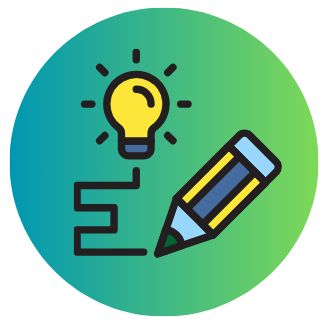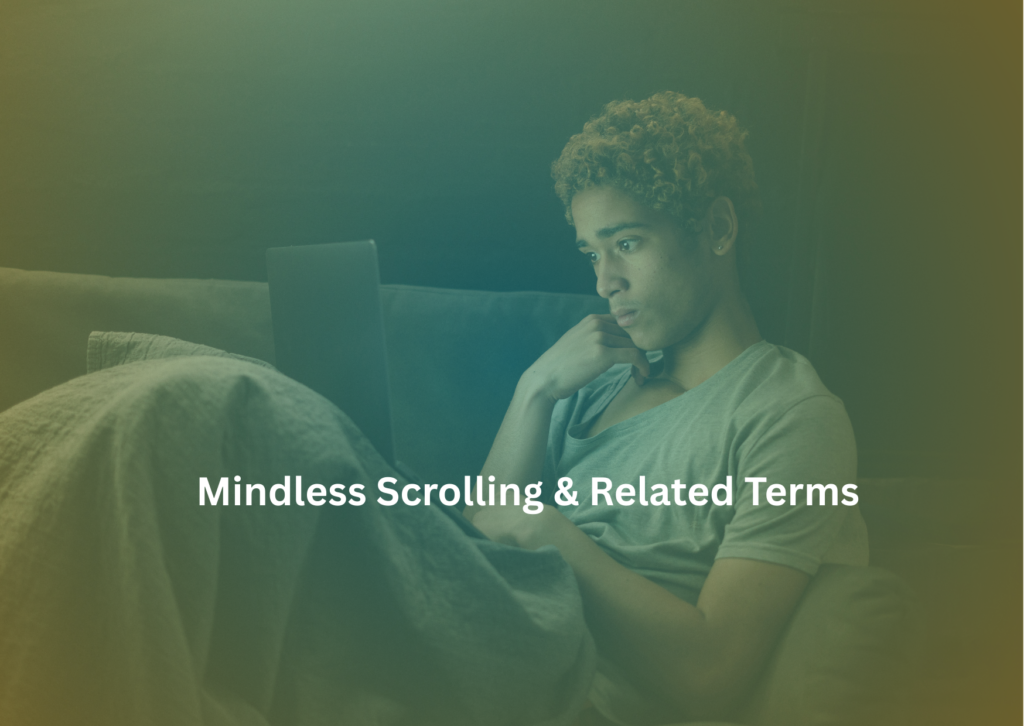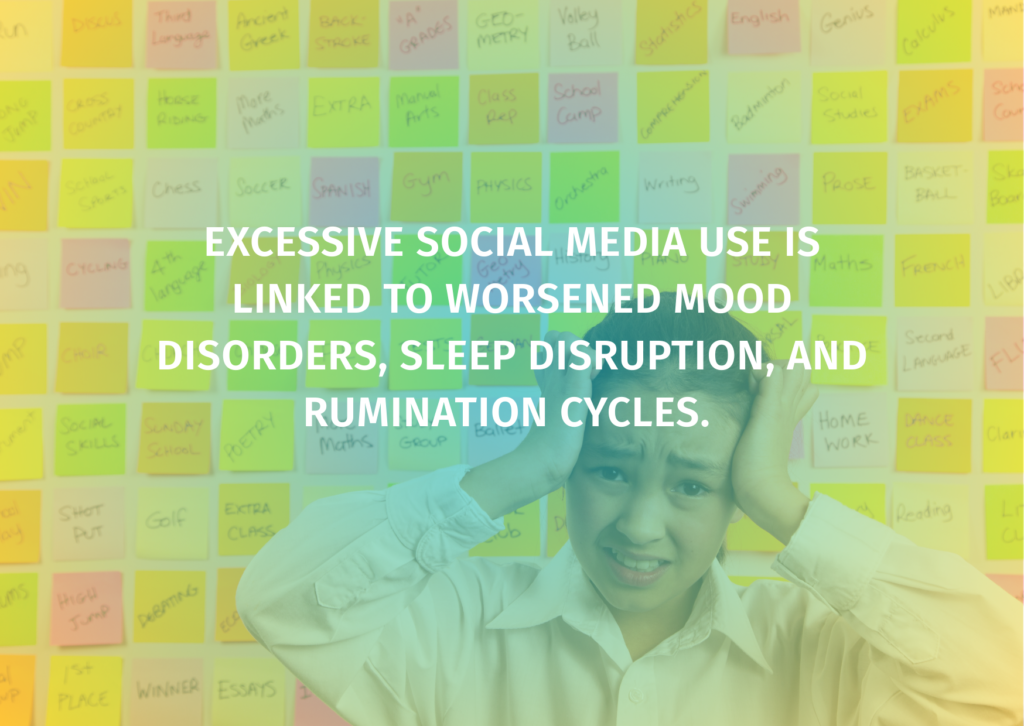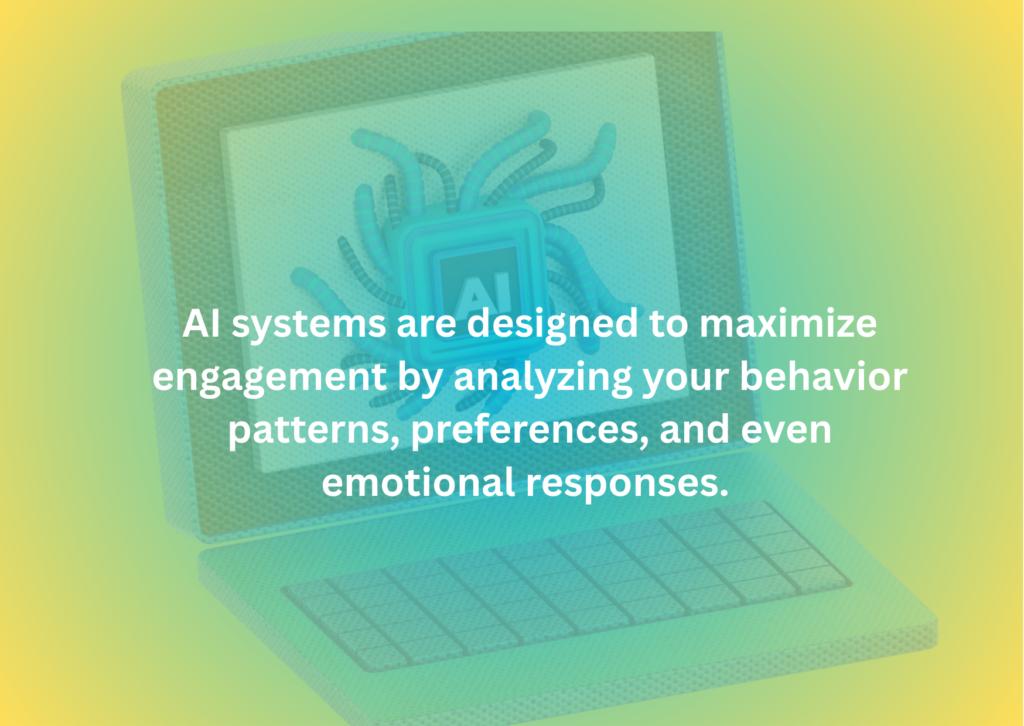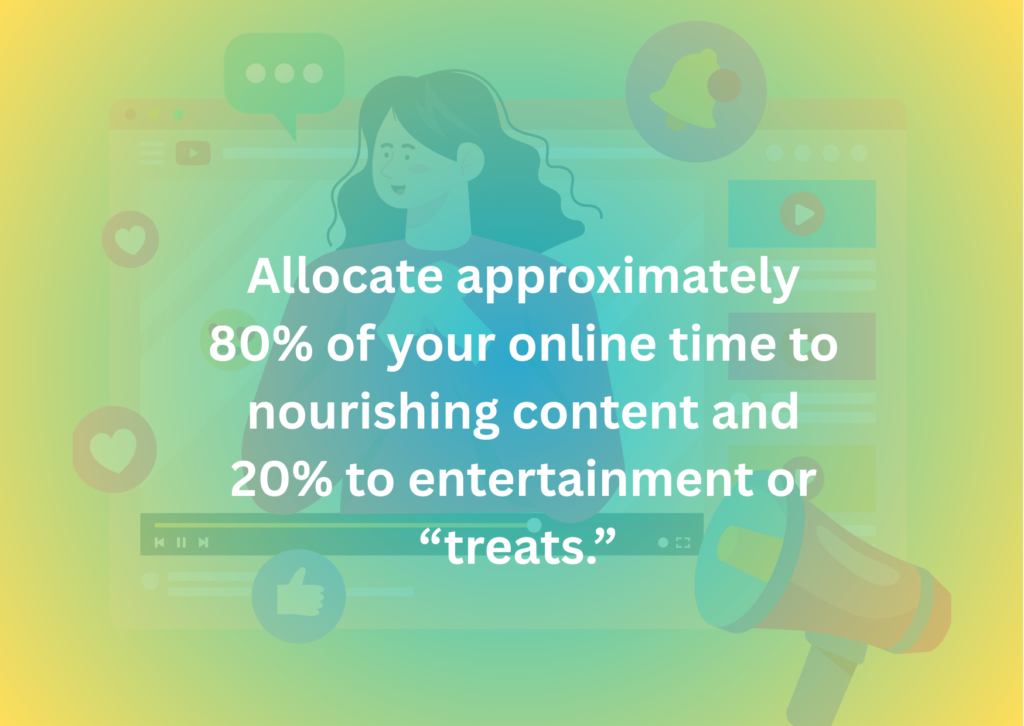Have you ever woken up in the middle of the night, reached for your phone “just to check one notification,” and suddenly found yourself lost in a sea of news feeds, updates, or mindless scrolling?
You’re not alone. Like a gentle hypnotist whispering through your screen, your phone’s endless feed and constant pings are built to pull you back again and again.
1. What is Mindless Scrolling?
Our infinite feeds are like digital junk food engineered to hook our dopamine loops. Each swipe, each notification, each new post triggers a tiny hit of pleasure that keeps us coming back for more.
According to Harvard Business Review, this is not accidental; these platforms are designed to maximize engagement through intermittent variable rewards, the same mechanism that makes slot machines so addictive.
Unchecked scrolling impacts our focus, mood, and real-world relationships in profound ways. A 2024 study from Harvard Health found that excessive social media consumption correlates with increased anxiety, depression, and feelings of inadequacy.
The constant barrage of information fragments our attention, making it increasingly difficult to engage in deep, focused work or meaningful face-to-face interactions.
This blog introduces a “digital nutrition” framework plus AI-enabled strategies to rebalance your content diet. Just as we’ve learned to distinguish between empty calories and nutrient-dense foods, we can develop a more mindful approach to our digital consumption.
By understanding the neuroscience behind scrolling addiction and implementing practical strategies, you can transform your relationship with technology from depleting to nourishing.
2. Defining the Phenomenon
2.1. Mindless Scrolling & Related Terms
Mindless Scrolling: This refers to automatic, habitual feed-swiping with little awareness of time passing or content consumed. A psychologist, Dr. Craig N. Sawchuk, explains that this behavior often starts with a goal of becoming more informed but quickly becomes obsessive and unproductive, wasting time as we surf from one story to another.
Doom-Scrolling: A more specific variant focused on obsessive consumption of negative news content.
According to Harvard Health’s September 2024 article, doom-scrolling emerged as an insidious threat during the pandemic. It describes a tendency to endlessly consume news that heightens feelings of anxiety, sadness, or anger.
Continuous Partial Attention: Unlike multitasking, which aims to be productive, continuous partial attention (CPA) involves dividing focus across multiple information streams without being fully present in any of them.
ELM Learning defines it as “an automatic process that enables people to simultaneously pay attention to several sources of information, whilst scanning for relevant information.”
2.2. Clinical Perspectives of Mindless Scrolling
Problematic Smartphone Use: While not yet classified as a formal addiction in the DSM-5, excessive scrolling shares neurological patterns with behavioral addictions.
UC San Diego research from 2025 explains that scrolling triggers the brain’s reward circuit, releasing dopamine whenever we discover new information, creating a feedback loop where we seek out more content.
Dissociation or Compulsion: The clinical understanding continues to evolve. Psychology Today research from 2024 suggests that scrolling-related behaviors exist on a spectrum from healthy information-seeking to problematic use that resembles compulsive behaviors.
For some individuals, scrolling serves as a form of dissociation or escape from uncomfortable emotions. What makes these behaviors particularly concerning is their ubiquity.
According to Mayo Clinic Press, unlike television, which eventually ended its 24/7 coverage, social media never stops. Our phones or mobiles allow us to search for content at all hours, and platforms learn from our behavior, delivering increasingly personalized content that keeps us engaged longer.
3. Mindless Scrolling: Neuroscience & Psychology behind why it’s so addictive
3.1. Dopamine-Driven Feedback Loops
Scrolling triggers what neuroscientists call intermittent variable rewards likes, new posts, and notifications releasing dopamine in our brains. According to UC San Diego research from April 2025, this neurological response is similar to what happens in other reward-seeking behaviors.
Each new piece of content provides a small hit of dopamine, creating a craving for more frequent stimulation. Over time, this reward-center sensitization makes us increasingly dependent on these digital hits.
Harvard Health explains that our brains are hardwired to orient us toward novelty and threat, an evolutionary survival trait. Throughout human existence, this wiring helped keep humans alive by noticing potential dangers, but in our digital environment, this protective tendency backfires.
The unpredictable nature of social feeds, never knowing what content will appear next, amplifies this effect.
Susan Tapert, Ph.D., a distinguished professor at UC San Diego School of Medicine, notes that, as with other addictive behaviors, doom-scrolling releases dopamine whenever we discover new information.
So, we create a feedback loop in which we seek out negative news: feel anxious yet momentarily rewarded by new data, then seek more.”
3.2. Cognitive & Emotional Consequences of Mindless Scrolling
Attention Fragmentation: The constant switching between apps, notifications, and content streams erodes our capacity for sustained attention.
ELM Learning research distinguishes between multitasking and continuous partial attention (CPA), noting that CPA allows people to shift from superficially concentrating on a lot of information to focusing on highly relevant information during a short attention span.
Mood & Stress: Doom-scrolling correlates with increased anxiety, depression, and feelings of helplessness.
Mayo Clinic Press research from 2024 found that the more time people spend consuming negative social media content, the more distressed they feel.
This negative content functions like a lens, causing us to pay more attention to stories that justify and accentuate our negative feelings.
Memory & Decision Fatigue: Excessive feed-swiping impairs working memory and goal-directed planning. Psychology Today research from September 2024 explains that our brains are relatively old operating systems processing an enormous volume of information at unprecedented rates.
The drain on our mental resources, coupled with the complexity of the information and decreased sleep quality, creates a damaging combination that impacts cognitive function and decision-making abilities.
This video dives into the cognitive and emotional impacts of endless feeds, using clear animations and evidence-based insights to show why that “one more swipe” can cost you focus and well-being
4. Life-Impact Assessment
4.1. Mental Health
The relationship between scrolling behaviors and mental health is increasingly well-documented. According to Psychology Today research from 2025, excessive social media use is linked to worsened mood disorders, sleep disruption, and rumination cycles.
A global study cited in March 2025 found that excessive social media use is associated with lower well-being and higher psychological distress.
Harvard Health’s research from May 2022 revealed that social media might not always be harmful the difference may relate to whether you engage in active, self-oriented activities or passive, other-oriented practices.
Active engagement, such as sending direct messages to friends, is less likely to worsen mood compared to passive scrolling, which creates opportunities for social comparison.
Sleep quality is particularly vulnerable to scrolling habits. As per a Mayo Clinic study, sleep disruption doesn’t make us the nicest to be around. We’re less tolerant and more impatient the following day.
The ABCD Study at UC San Diego is the largest study on youth brain development, showed that using screens at bedtime was associated with more sleep disturbances and nightmares.
4.2. Productivity & Learning
Reduced academic and work performance correlates strongly with excessive scrolling behaviors.
Research from UC San Diego found that teens with heavier daily screen use had more anxiety and depression symptoms than those with less screen time, which in turn affected their academic performance and executive function.
ELM Learning’s research distinguishes between multitasking (attempting to complete multiple tasks simultaneously) and continuous partial attention (paying attention to multiple things without necessarily completing tasks).
While multitasking often results in high error rates, continuous partial attention can fragment focus and reduce information absorption, ultimately impacting learning outcomes.
The cognitive load from processing complex information across multiple platforms depletes mental resources throughout the day.
4.3. Social & Emotional Well-Being
Perhaps most concerning is the impact on our social connections and emotional health. Harvard Health research found that social media can exacerbate feelings of social comparison, envy, and isolation.
The phenomenon of “fear of missing out” (FOMO) has become closely associated with social media use, with higher levels of FOMO linked to greater social media use and more problematic behaviors.
Time spent mindlessly scrolling often replaces time spent in face-to-face interactions. As per Mayo Clinic research, time spent with friends and family tends to be restorative. However, when you doom-scroll, you may spend so much time on your phone that there’s little left to spend with other humans.
The curated nature of social media content creates unrealistic standards that many feel they must meet.
Research by PubMed Central found that individuals who engaged in upward social comparisons on social media experienced negative emotions such as envy and diminished self-esteem, creating a constant cycle of comparison that can lead to decreased self-worth and heightened anxiety.
5. The Digital Nutrition Framework
5.1. Macro- vs. Micro-Nutrients of Content
Just as we’ve learned to distinguish between nutritional food groups, we can categorize our digital consumption into “junk” and “superfood” content.
According to digital nutrition expert Jocelyn Brewer, “Digital Nutrition is a philosophy for framing our digital diets in a positive and empowered way (without the guilt and shame that often comes with this topic!).”
“Junk” Content: This includes sensational headlines, auto-play videos, and endless social feeds designed to maximize engagement rather than value.
Like empty calories that provide momentary satisfaction but little nutritional benefit, this content delivers quick dopamine hits without meaningful enrichment. As per research, these experiences often leave us feeling depleted rather than energized.
“Superfood” Content: In contrast, digital superfoods include deep-dive articles, creative tutorials, and supportive communities that foster growth and learning.
These experiences provide substantial mental nourishment, leaving us feeling enriched rather than drained.
Quality content engages our critical thinking, sparks creativity, or deepens our understanding of important topics.
5.2. The Five Essential “Mental Nutrients”
A balanced digital diet should include five essential mental nutrients, each serving a distinct purpose in our cognitive and emotional well-being:
Curiosity: Content that expands your knowledge and worldview, challenging you to think differently.
This includes educational podcasts, in-depth journalism, and documentaries that introduce new concepts or perspectives. Curiosity-driven content feeds our innate desire to learn and understand the world around us.
Creativity: Content that inspires imagination and original thinking. Creative platforms, art tutorials, and maker communities stimulate different neural pathways than passive consumption.
According to the principle of digital nutrition, creative engagement online can counterbalance the depleting effects of mindless scrolling.
Connection: Content that fosters meaningful human relationships. Authentic interactions with friends, family, and communities provide social nourishment that superficial likes and comments cannot.
Research by Oxford Academic shows that active, purposeful social media use for genuine connection has different mental health outcomes than passive scrolling.
Calm: Content that promotes mindfulness and relaxation. Meditation apps, nature videos, and soothing music can create digital spaces for mental restoration.
For those looking to deepen this practice or explore how to harmonize digital tools with the healing power of the natural world, Connecting with Nature.
In a world of constant stimulation, calm-inducing content serves as a necessary counterbalance to high-intensity digital experiences.
Challenge: Content that pushes your cognitive abilities in productive ways. Strategic games, learning platforms, and problem-solving activities engage your brain in ways that strengthen neural connections rather than fragmenting attention.
Unlike mindless scrolling, challenging content requires focused engagement that can improve cognitive function over time.
6. Diagnosing Your Digital Diet
6.1. Self-Audit Questions
Understanding your current digital consumption patterns is the first step toward creating a healthier balance. Harvard Health recommends tracking your feelings before and after using social media, rating your emotional state on a scale of 0 to 10.
This simple practice can reveal how different types of content affect your mood and energy levels. Consider these key self-audit questions to evaluate your digital diet:
Which feeds feel like empty calories?
Identify platforms or accounts that leave you feeling drained, anxious, or inadequate after engaging with them.
According to Healthline research, content that consistently triggers negative emotions may be depleting rather than nourishing your mental health.
Which sparks genuine insight or joy?
Recognize the content that consistently leaves you feeling energized, inspired, or meaningfully connected.
Research suggests that content aligned with your core values and interests tends to have more positive effects on your well-being.
What are you seeking when you reach for your device?
Jocelyn Brewer, digital nutrition expert, recommends using a “mental hunger scale” to attune to what you’re seeking online.
Are you looking for distraction, connection, information, or entertainment? Understanding your motivation can help you make more intentional choices.
6.2. Screen-Time Benchmarks
While quality matters more than quantity, time metrics can provide useful benchmarks for evaluating your digital consumption.
Harvard Health guidelines suggest limiting recreational screen time to no more than 2 hours daily, excluding work or educational requirements.
Research from the Adolescent Brain Cognitive Development (ABCD) study found that teens with more than 3 hours of daily social media use showed significantly higher rates of anxiety and depression.
For those seeking to understand these emotional challenges more deeply and explore pathways to healing, Shining a Light on Depression: Finding Hope. The article underscores the importance of self-awareness, connection, and reclaiming agency over our mental well-being
While adult guidelines are less definitive, similar patterns emerge in adult research, suggesting that moderation remains important across age groups.
Rather than focusing solely on total screen time, UNESCO MGIEP recommends examining how screen use affects other life domains.
Is screen time displacing sleep, exercise, face-to-face relationships, or other activities essential for well-being?
These displacement effects often indicate problematic usage patterns that warrant attention.
7. AI Relevance: Friend & Foe
7.1. How AI Fuels Overconsumption
Artificial intelligence has fundamentally transformed how content is delivered to users, often intensifying the challenges of digital overconsumption.
Hyper-personalized recommendation engines, powered by sophisticated algorithms, create increasingly tailored content streams that can escalate “rabbit holes” of consumption.
These AI systems are designed to maximize engagement by analyzing your behavior patterns, preferences, and even emotional responses.
According to a study, these algorithms learn from your every interaction what makes you pause, what keeps you watching, and what prompts you to engage, creating a feedback loop that becomes increasingly effective at capturing your attention.
The problem intensifies as AI systems become more advanced. They don’t just recommend content similar to what you’ve already consumed; they identify psychological patterns in your behavior to predict what will keep you scrolling longer.
Research highlights that these systems can detect vulnerability points, times of day when you’re more likely to engage in extended scrolling sessions, and deliver particularly engaging content during these periods.
7.2. AI-Powered Interventions
While AI contributes to digital overconsumption, it also offers promising solutions through several emerging technologies:
Habit-Tracking & Nudges: AI apps can detect scrolling patterns and suggest timely breaks. Unlike simple timers, these intelligent systems learn your unique usage patterns and intervene at optimal moments.
Studies suggest that personalized interventions are significantly more effective than generic screen time limits, as they account for individual differences in usage patterns and vulnerability points.
Smart Blocking: Machine learning-driven site-blockers adapt to your specific vulnerabilities. These systems go beyond basic website blocking by identifying your personal triggers and high-risk periods.
According to digital wellness research, adaptive blocking tools that learn from your behavior patterns show higher success rates than static blocking approaches.
Personalized Content Curation: AI-driven feeds can prioritize educational or wellness content based on your goals. Rather than maximizing engagement at any cost, these alternative algorithms optimize for user well-being.
Research shows that AI systems can be trained to recognize and promote content that contributes to positive mental states while de-prioritizing content associated with negative outcomes.
The key distinction lies in the objective function, what the AI is optimized to achieve. Standard recommendation engines maximize watch time and engagement, while wellness-oriented AI prioritizes balanced consumption and positive psychological outcomes.
As users become more aware of these differences, demand for ethical AI design continues to grow across digital platforms.
8. Building Your Balanced Content Diet

8.1. Environmental Engineering
Creating an environment that supports healthier digital habits is essential for sustainable change. Small modifications to your physical and digital spaces can significantly reduce mindless scrolling:
Dopamine-free zones establish physical areas where devices are limited or prohibited. Harvard Health recommends keeping phones out of the bedroom, as this simple boundary can improve sleep quality and reduce late-night scrolling.
Harvard Business Review research suggests that placing your phone in a desk drawer or at least 10 feet away during work hours can similarly reduce distraction.
First-hour rituals protect your morning mental space from immediate digital immersion. According to Psychology Today, how you start your day sets the tone for your attention patterns.
Delaying social media use until after completing a morning routine of stretching, journaling, or breakfast creates a buffer to your stress response and establishes more intentional consumption patterns.
Hidden app icons reduce visual triggers that prompt habitual checking. Research shows that simply moving social media apps off your home screen can decrease usage by making access less automatic.
This small friction introduces a moment of conscious choice before engaging with potentially distracting content.
8.2. Time-Block & Micro-Break Strategies
Rather than attempting to eliminate digital consumption entirely, research supports more structured approaches to time management:
Fixed “content mealtimes” establish dedicated periods for different types of digital consumption. Just as regular meal schedules support healthy eating, scheduled content blocks help prevent all-day grazing on digital inputs.
Weber State University research suggests that this approach helps maintain clearer boundaries between work, leisure, and rest.
5-minute breaks for movement or mindfulness interrupt extended scrolling sessions. University of Sydney research found that even brief pauses can reset attention patterns and reduce the likelihood of falling into extended consumption cycles.
These micro-breaks serve as pattern disruptors that prevent the trance-like state often associated with mindless scrolling.
Read also: Life Awakening: Mindful Living Journey
Pomodoro technique applications alternate focused work periods with short breaks, creating a rhythm that accommodates both concentration and mental rest.
Research suggests that this structured approach to time management can reduce digital fatigue while maintaining productivity.
8.3. Strategic Dopamine Menu
Creating intentional alternatives to mindless scrolling helps satisfy the brain’s need for stimulation in healthier ways:
Curate a shortlist of “high-value” feeds, including newsletters, educational podcasts, and quality publications.
Digital nutrition expert Jocelyn Brewer recommends considering the blend of skills and competences, values and traits, emotions, and information engaged in during this time rather than focusing solely on time metrics.
Create a “digital nutrition label” for each app and platform you use regularly.
Research suggests evaluating content sources based on how they make you feel afterward, helping you distinguish between depleting and nourishing digital experiences.
Develop “if-then” plans for common trigger situations.
Research by Psychology Today shows that pre-planning specific responses to boredom, stress, or other emotional triggers can redirect behavior from automatic scrolling to more intentional activities.
8.4. Accountability & Habit Support
Sustainable change often requires external structure and social reinforcement:
Partner check-ins establish mutual accountability for digital wellness goals. Research indicates that sharing your intentions with others significantly increases follow-through on behavior change commitments.
AI reminders provide personalized nudges based on your usage patterns. Unlike generic time limits, adaptive AI tools can learn your vulnerability points and intervene at optimal moments with relevant suggestions.
Habit-tracking dashboards visualize your progress and patterns over time. Research shows that measurement itself often motivates behavior change, as seeing improvements reinforces new habits and highlights areas needing attention.
9. From Detox to Sustainable Balance
9.1. Digital Detox Myths
Total digital abstinence is rarely sustainable in today’s connected world. Research indicates that complete “digital detoxes” often fail to create lasting habit change.
Like crash diets that lead to rebound weight gain, sudden technology withdrawal typically results in compensatory overconsumption when normal access resumes. More effective approaches focus on recalibration rather than elimination.
Harvard Health research suggests that short, planned breaks from specific platforms can reset usage patterns without triggering the anxiety and withdrawal symptoms associated with complete disconnection.
These strategic pauses allow you to evaluate how different digital experiences affect your mood and productivity. The goal isn’t to eliminate technology but to establish a healthier relationship with it.
9.2. The 80/20 Rule for Digital Consumption
The Pareto Principle offers a practical framework for balanced digital consumption: allocate approximately 80% of your online time to nourishing content and 20% to entertainment or “treats.”
This approach acknowledges that some mindless scrolling can serve as legitimate relaxation while ensuring it doesn’t dominate your digital diet.
Implementing this rule requires an honest assessment of your current consumption patterns. Research suggests categorizing your digital activities into “investment” (content that builds knowledge, skills, or relationships) and “entertainment” (content consumed primarily for pleasure or distraction).
While both categories have value, maintaining a healthy ratio between them supports overall digital well-being.
The 80/20 approach also applies to platform selection. Research indicates that limiting yourself to a few high-quality information sources reduces the cognitive load associated with constant platform switching.
Rather than attempting to monitor dozens of feeds across multiple platforms, curating a smaller selection of valuable sources can improve both information quality and mental clarity.
“When we forget our ability to choose, we learn to be helpless. Drip by drip, we allow our power to be taken away until we end up becoming a function of other people’s choices.”
— Greg McKeown.
10. Conclusion
The digital landscape we navigate daily is neither inherently good nor bad; it’s how we engage with it that determines its impact on our lives.
Throughout this exploration of the Digital Nutrition Framework, we examined how our infinite feeds can function like digital junk food, engineered to hook our dopamine loops and fragment our attention.
We’ve seen the science behind mindless scrolling, doom-scrolling, and continuous partial attention, understanding how these behaviors affect our neurochemistry, cognitive function, and emotional well-being.
The research is clear: unchecked digital consumption can significantly impact our mental health, productivity, and social connections. But rather than advocating for digital abstinence, we have explored a more sustainable approach, treating our content consumption like nutrition.
By distinguishing between “junk” and “superfood” content, incorporating the five essential mental nutrients, and implementing practical strategies to rebalance our digital diets, we can transform our relationship with technology.
The journey toward digital wellness begins with a single step: swap just one minute of mindless scrolling for one minute of reading or listening to a podcast. This small change initiates a pattern of more intentional consumption that can gradually expand to reshape your entire digital lifestyle.
Embrace a “digital nutrition” mindset, choose content that truly feeds your mind. Your attention is your most valuable resource; invest it wisely in experiences that nourish rather than deplete you.
With thoughtful curation and mindful consumption, technology can enhance rather than diminish your life, serving as a tool for growth, connection, and well-being in our increasingly digital world.
Frequently Asked Questions (FAQs) about mindless scrolling
What is Mindless Scrolling?
Absently browsing content without purpose, often driven by habit or boredom, reduces focus and productivity.
Is scrolling OCD?
No. Compulsive scrolling is habitual, not OCD (a clinical disorder involving intrusive thoughts and rituals).
What is Doom Scrolling and Its Effect on Your Mental Health?
Obsessively consuming negative news worsens anxiety, depression, and stress, skewing the worldview toward pessimism.
How Mindless Scrolling Impacts Your 5 Core Areas of Life?
Degrades mental health, productivity, relationships, physical health (posture/eyesight), and sleep quality.
How do I stop my mindless scrolling addiction?
Set app timers, delete triggers, replace scrolling with active hobbies, and schedule tech breaks.
What is the Essential Mental Diet Your Brain Craves?
Prioritize uplifting content, limit negativity, engage in learning, and balance screens with offline activities.
How do I find a middle ground with social media?
Curate feeds, allocate fixed usage times, mute stressors, and prioritize real-world interactions.
What is digital detox?
Intentional break from devices (hours/days) to reduce stress, reset focus, and reconnect with offline life.
What’s a healthy amount of screen time?
2-3 hours/day (non-work); adjust by age (less for kids) and balance with movement/socializing.
